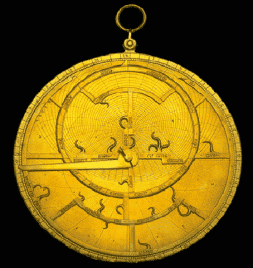A history of astronomy

Astronomy, the study of space and its celestial bodies and the science of the universe in general, was named after the Greek word, astronomia which means 'star arranging'.
Astronomy grew out of problems that the early civilisations had. They needed to solve problems relating to time and distance - both mathematical topics. It was vital to the existence of these people that they could calculate when to plant seeds and when to harvest their crops and also to be able to find the locations and distances to far-off trading places where they could exchange goods and tools.

To ancient peoples watching the sky must have with magical. Trying to find explanations about the bright sun, which divided daytime from night-time, rose every morning from one direction, the east, moved steadily across the sky during the day, and set in a nearly opposite direction, the west must have been fascinating. Just as fascinating was the night sky when more than 1000 visible stars followed a similar course night after night and appeared to stay in permanent groups that rotated around a fixed point in the sky, which came to be known as the north pole.
The Sumerians and ancient Greeks were expert astronomers. Sumarian astronomers liked the sexagesimal system (a system based on sixty) and they handed down to us the degree as a unit for measuring angles and 360 (the number of degrees in a full rotation) was almost the same as the number of days in a year. The astrolabe is a very ancient astronomical computer for solving problems relating to time and the position of the Sun and stars in the sky. Several types of astrolabes have been made over the centuries. Astrolabes can be seen in museums and in observatories. A typical old astrolabe was made of brass and was about 15 cm in diameter, although much larger and smaller ones were made. Astrolabes show how the sky looks at a specific place at a given time. This is done by drawing the sky on the face of the astrolabe and marking it in a way that positions in the sky are easy to find. To use an astrolabe, you adjust the moveable parts to a specific date and time.


Left: An old brass astrolabe
Right:A modern electronic astrolabe
Today, you don't need to live close to a museum or an observatory to be able to see and find out more information here astronomy. Websites make the sky, the planets and the stars available to us all.
Mathematics is very closely related to ancient sciences like astronomy. It was a remarkable accomplishment that people with very limited technology were able to invent and develop measuring tools so that they could map out and described the world they lived in.
